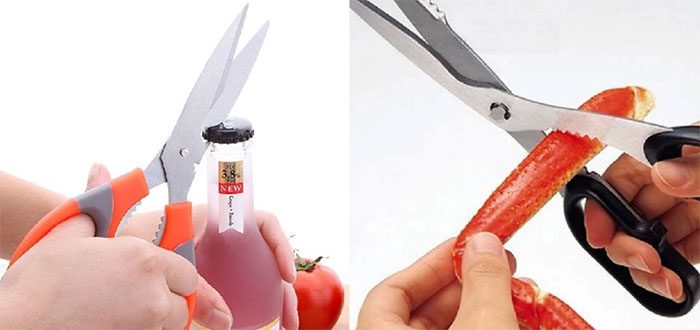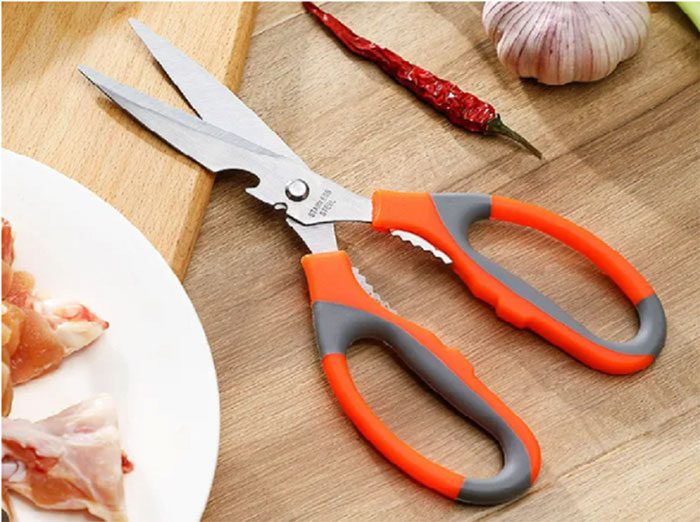Using scissors frequently, yet most people still don’t know the purpose of the notch and the serrated edge on multi-purpose scissors.
Applications of Multi-Purpose Scissors
Today’s scissors are not just for trimming; they can be used for many other purposes as well. If your scissors have a notch and a serrated edge that you have never used or are unaware of their actual functions, don’t overlook their benefits. Here are some situations where they can be handy.
Notch for Opening Bottle Caps
The notch on the scissors is designed to help you easily open beer bottle caps. Just place the edge of this notch under the bottle cap and lift it up; you’ve successfully opened a beer.
If you don’t have a specialized bottle opener, you can simply use your multi-purpose scissors with the notch to open a beer effortlessly.

The purpose of the notch and serrated edge on scissors.
Serrated Edge for Cracking Crab Claws
Some scissors have a row of hard, sharp serrated teeth near the handle.
In fact, you can use this unusual design of the scissors to crack crab claws. It will make cracking the claws much easier than usual without the need for specialized crab crackers.
So, if your family enjoys crab but lacks a specialized crab cracker, you can use these scissors instead, and the result will be satisfying.
Serrated Edge for Scaling Fish and Cutting Vegetables
Instead of using knives as usual, with the convenient design from manufacturers, you can simply twist the pivot on the scissors to separate the two blades, instantly creating two sharp knives for scaling fish.
Additionally, after separating the scissors, you can use one side to cut simple foods just like a regular knife.
With just one pair of scissors, you have multiple functions, making them incredibly convenient for everyday use at home.
Simple Ways to Sharpen Scissors at Home
Using a Bottle, Jar, or Glass
This may sound strange, but glass is one of the best materials for sharpening knives and scissors.
You can use an empty soda bottle, a beer bottle, or any glass available at home. Cut the scissors into the body of the bottle, repeating the action continuously until the blades of your scissors are as sharp as desired.
Using Sandpaper
The rough surface of sandpaper is similar to a sharpening stone, making it very effective for sharpening scissors.
Simply cut through a piece of sandpaper multiple times with your scissors, and you will be surprised by the results.

These scissors can be used for many different tasks.
Using Aluminum Foil
Not only is aluminum foil used for wrapping food when grilling, but it can also help you sharpen old scissors.
Layer 4-5 sheets of aluminum foil together, and cut through it multiple times with your scissors; your scissors will quickly return to like-new condition.
Using a Sharpening Stone
A sharpening stone is well-known for sharpening knives and works similarly for scissors.
First, soak the sharpening stone in water for 10 minutes to allow air bubbles to escape.
Hold the scissors and sharpening stone at an angle of 10-15 degrees, sharpening the scissors along the length of the blade 4-5 times, then flip it over and repeat on the other side. Perform the same action with the other blade.
Using a Needle
A needle is also one of the quick solutions for sharpening scissors. Simply place the needle between the blades of the scissors and cut through the needle repeatedly. However, this method may take more time for your blades to regain sharpness.


















































